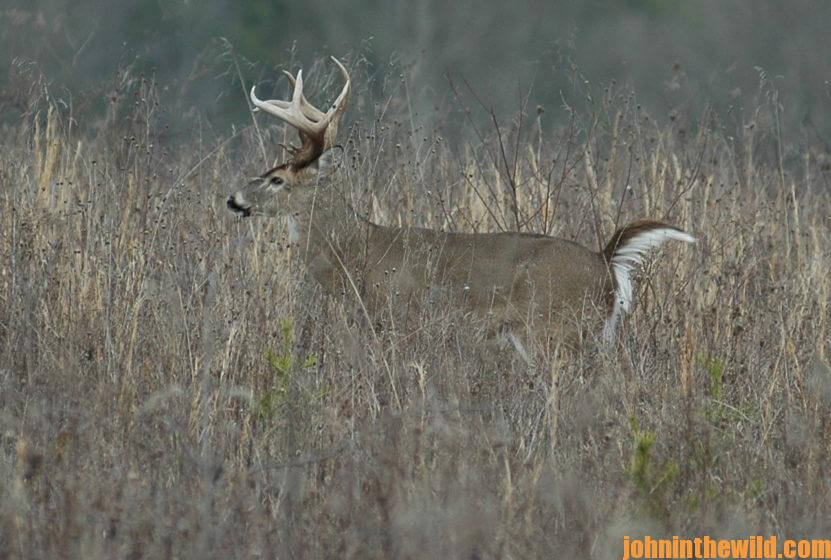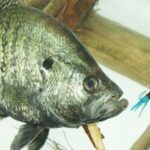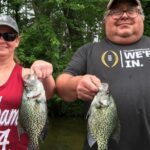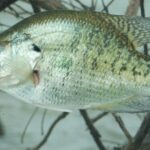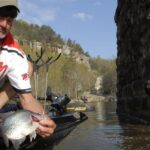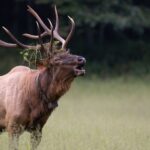Editor’s Note: Between the cover where deer bed down, and the places where they feed, trophy-racked bucks are on the move and vulnerable early in the morning and late in the afternoon.
During the mating season, which may occur from November – February in various sections of the U.S., sex is the #1 deer lure. Often a buck will forego food for a few days to service does during the rut. Unlike the man who buys a flashy automobile and expensive suits, has his hair styled and flashes big 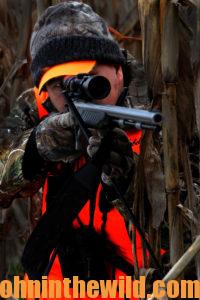 money to attract the feminine gender, the buck prepares a scrape along an old logging road, a trail or some other path through the woods. Often a scrape will be found on the edges of fields too.
money to attract the feminine gender, the buck prepares a scrape along an old logging road, a trail or some other path through the woods. Often a scrape will be found on the edges of fields too.
Generally, a scrape consists of a pawed area from 2 to 6 feet in diameter. In this pawed ground, the buck urinates to leave a strong scent for the doe. Then the buck will crunch but not eat the limbs and leaves of an overhanging bush or tree above the pawed ground to leave his scent from his mouth. He also will drag the brush past his eyes and nose again to leave his scent for passing doe s. Finally he will rub trees and bushes with his antlers to leave a visible sign for the doe.
Most bucks make a series of scrapes – a scrape line. When a doe is ready or nearly ready to breed and finds one of these scrapes, she’ll wait in that region for the buck to come by and service her. Most of the time the buck 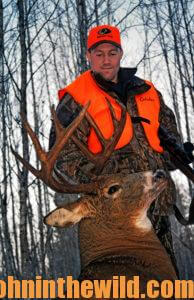 will check his scrape at least once every three days. However, the times he chooses to check his scrape line are not always during daylight hours. A hunter’s chances of taking a deer often are good if he positions himself 20–30 yards away from a scrape during the rut.
will check his scrape at least once every three days. However, the times he chooses to check his scrape line are not always during daylight hours. A hunter’s chances of taking a deer often are good if he positions himself 20–30 yards away from a scrape during the rut.
One of my friends has found that creating mock scrape trees is productive. My friend cuts down either a big limb or a small oak tree – 3-4 inches in diameter at its base – digs a hole and puts that tree where he wants it to be. Then he uses ScrapeFix powder on the limbs and under the tree on the ground and places other types of deer lure and deer scents under the tree. If the bucks break the limbs on the mock scrape tree by rubbing their antlers and their foreheads there, my buddy will screw a new limb into the trunk of that tree, and the deer can work it again.
Two productive places to watch for bucks are between two or more scrapes – so you can see the buck coming from either direction – or between a food source and the scrape. Just because the rut is on, the buck won’t starve to death. So, food sources still will lure a male whitetail. The does he’s searching for also will have to feed. The area or trail between the food and the scrape are productive ambush points for the hunter.
To learn more about hunting for deer, check out John E. Phillips’ book, “How to Hunt Deer Up Close: With Bows, Rifles, Muzzleloaders and Crossbows” in Kindle, print and Audible versions at http://amzn.to/11dJRu8
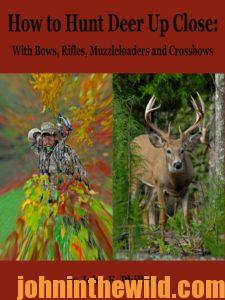 Tomorrow: Hunt Watering Holes for Big Deer
Tomorrow: Hunt Watering Holes for Big Deer



